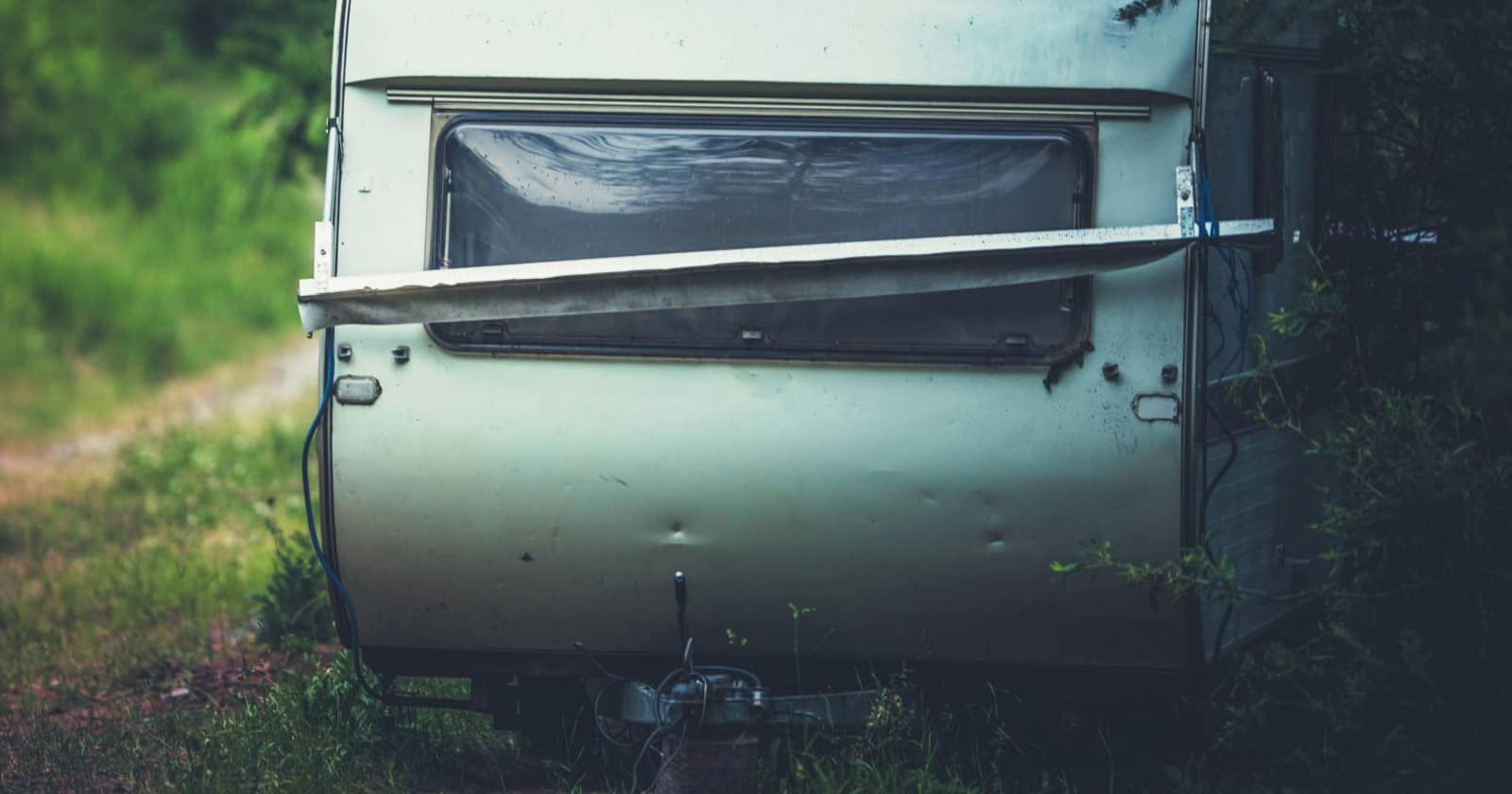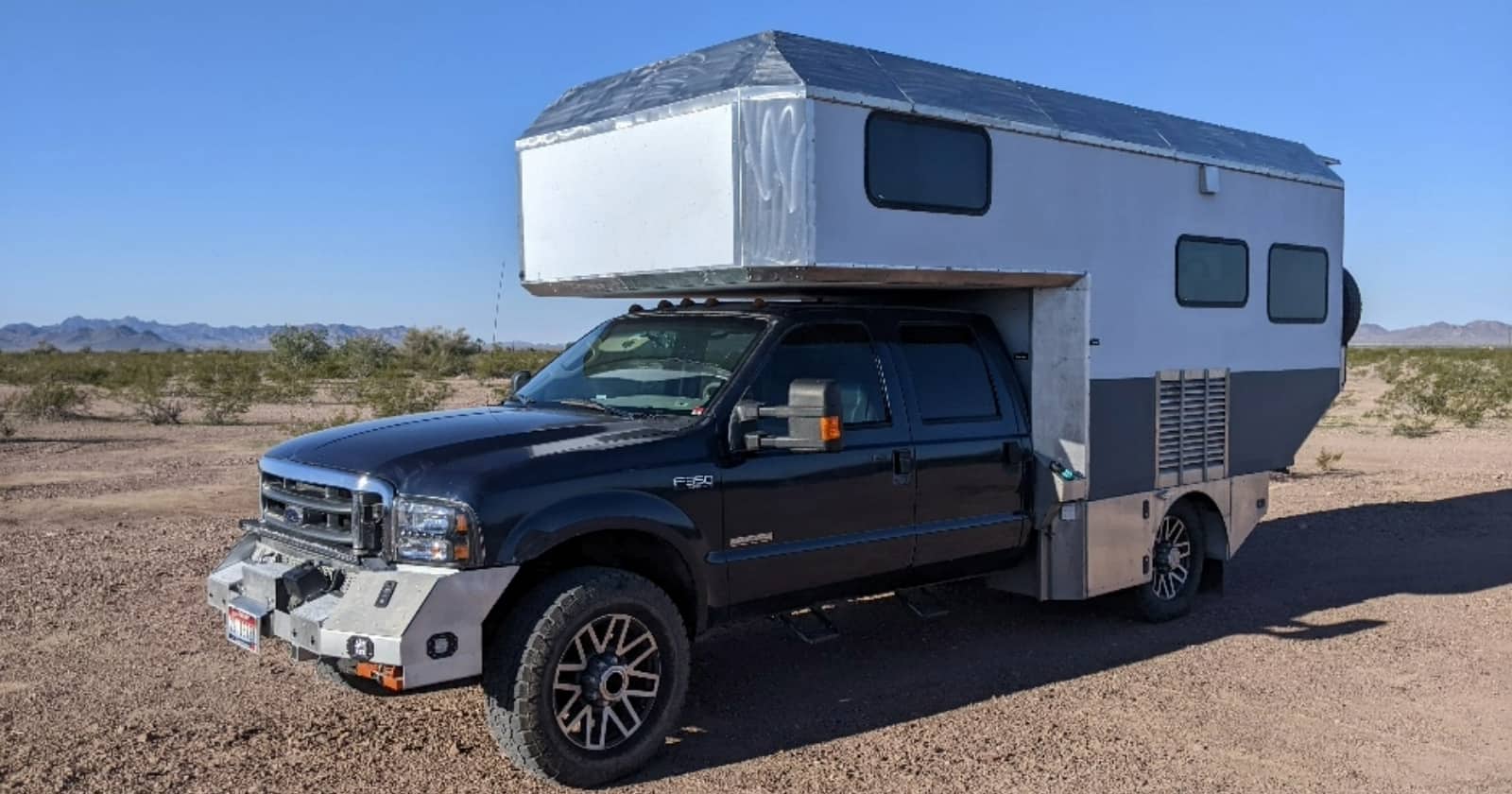Choosing between a DIY vs. professional RV paint job presents a unique dilemma. Opting for DIY offers a chance to express significant personal creativity while hiring a professional involves a hefty cost but ensures expert execution of your vision.
Your confidence in your own capability, previous experience painting (on the industrial side), and the size of your RV are factors as well. Painting a Class A is an entirely different animal than painting a teardrop or a campervan. Then there’s the “assumed” capability, which we are all guilty of from time to time.
For instance, if you think painting sheetrock a few times in your home is the same as painting the exterior of an RV, you’re already making your first mistake. So, what’s best for your RV? The answer isn’t always easy, and it depends on several factors that you should weigh before you make a decision.
The DIY Path: What You Need To Know
The key to engaging in a DIY vs. a professional RV paint job — the nucleus around which everything else revolves — is surface prep. Without proper surface prep, the entire effort falls apart. It doesn’t matter if you roll it, spray it, use the most expensive paint on the planet, or paint the bottom of your shoes and walk around on the roof.
If your surface prep efforts are lukewarm, your RV will suffer for it in the long run. With that being said, there are a few other, key considerations you should be aware of.
Skills and Knowledge
Obviously, not everyone is a master painter or even a first-class journeyman. So, an assessment of your own capability boils down to whether or not you’re capable of painting your RV and whether you can successfully mimic professional jobs.
For instance, watching a YouTube video that covers the finer points of spray painting with different paints and spray guns is a good idea, assuming you want to spray paint. But can you replicate the actions in the video? A DIY RV paint job is not simple, but it doesn’t have to be overly complicated either.
Cost Breakdown
If you go with the best paint the industry has to offer (two-part polyurethanes are the most exceptional), it will probably cost you more for the paint than it will for all of the tools and materials combined. That is unless you’re painting a small teardrop or maybe a campervan.
The spray gun and compressor come second and are generally pretty expensive themselves. It’s advisable to avoid a cup gun if there’s any chance you will need to apply a serious angle to your spray gun or turn it upside down. If you decide to spray, you will still need a roller and paintbrushes as well, to help fix mistakes.
- Spray gun with a 1.4mm tip (or the recommended tip for the type of paint you choose)
- Compressor
- Buckets
- Roller handles
- Paint brushes
- Roller knaps (check paint can for roller-type recommendations)
- Masking tape
- Tarp or plastic for covering windows, headlights, taillights, etc.
- Thinner and solvents that match your paint type
- Paint trays
- Vapor mask (if spraying)
- Power drill for mixing paints/solvents/thinners in your buckets
- A painter’s suit (if spraying)
- An orbital sander for surface prep
- 200-grit sanding discs and paper
This covers your basics. Of course, the list is subject to change according to the situation.
Time Investment
This depends on the size of your RV, the tools you decide to use, and whether or not your RV is outside or inside. For example, you don’t want to paint your RV in direct sunlight, so you’re limited to specific times of the day. For obvious reasons, painting a Class A will take a lot longer than painting a Class B.
Choosing to spray paint will cut your time by a lot. If you choose to do a spray job, the longest factor will be surface prep.
Guaranteed Quality
There are no guarantees in this world, even if you hire a professional. This is true because everyone sees the term “guarantee” as infallible. A guaranteed warranty wouldn’t exist if nothing ever failed within the warranty timeframe. You do the best you can, cover all your bases, do your homework, and exercise patience throughout.
If you do all those things, your RV will present a professional look and feel for the life expectancy of the paint, so long as you don’t take your RV out into an abandoned parking lot to do donuts. A fantastic paint job will remain a fantastic paint job as long as you take care of it. This is true if you choose a DIY vs. professional RV paint job, or vice versa.
Choosing Professional Services: When It Makes Sense
A professional paint job is not as easy as it looks. If you have the extra cash, there’s nothing wrong with opting for a professional job. The beauty of choosing to DIY vs. hiring a professional RV paint job is that you get to choose. You can have your cake and eat it too, either way you go.
Finding the Right Professional
You’ll be surprised at how easy it is to find a professional RV paint service in your area. They do exist. Some of them also do auto detailing. If you’re near the sea, there’s a good chance a marine paint specialist will do the job for you as well. There is very little difference between marine painting and RV painting. It’s just that painting boats mostly involves fiberglass, though there are aluminum alternatives there as well.
In fact, you’ll discover that some of the best paint options for your RV are listed as marine paints, including two-part polyurethane. To find the best professionals near you, it’s just a matter of hitting up Alexa, Siri, Google, Bing, or whatever search engine or AI service floats your boat (or, in this case, drives your RV). Just make sure the business has a good reputation. Pay attention to those customer reviews!
Cost Analysis
The cost will vary widely, depending on the services offered, the decals (they have to come off, and you’ll need new ones), the types of paint, and the number of hours for completion. Below are some generalizations, but at the end of the day, that’s all they are.
- Class A Motorhome: $8,000 to $35,000
- Class B Motorhome: $5,000 to $7,500
- Class C Motorhome: $5,000 to $10,000
- Travel Trailers: $5,000 to $15,000
- Fifth-Wheels: $5,000 to $20,000
As you can see, the disparities are significant. That’s because so many things go into the calculations that it’s impossible to nail down a precise figure. The size of the motorhome, fifth-wheel, or travel trailer, the types of paint and the number of paints that go into it, the business (and location plays a factor), slide-outs (or lack thereof), decals, personal preferences, and the shape of your RV all play a role.
Timeline
Again, this is highly dependent on a number of things. Professionals can usually knock things out pretty quickly. However, where is your RV in line? How many painters work there and how many will be dedicated to your RV project? How extensive is the project? Is your RV in bad shape? Do you prefer a bunch of different paints, a solid color, or decals? The answer, as with everything else, is malleable.
Guaranteed Quality
Many of the best professional paint services will offer a lifetime or extensive warranty on the paint. So you do run less of a risk going with a professional. If the paint fails, without any fault of your own, they will repair it. If you use your RV a lot, the chances of it failing at some point will increase, but you’re covered.
Choosing to DIY vs. hiring a professional RV paint job service runs more of a risk, but adds a layer of personalization and ownership you won’t get any other way. Of course, that all boils down to getting it right the first time on your part. A professional service alleviates that responsibility.
Comparative Analysis: DIY vs. Professional RV Paint Job
Depending on your own skill level, there are several things to compare, some of which may or may not be worth your time.
- Cost: It is far cheaper to do the prep work and paint job yourself, including removal and installation of the decals (if applicable).
- Artistic Freedom: For obvious reasons, you have a wider artistic license to paint your RV however you want.
- Time: So long as you knock it out, step by step, you will generally be finished before a professional service.
- Quality: Unless you are a painter by trade, it will be difficult to replicate the quality the pros offer.
- Situational: You can live in your RV while you work on a DIY job, but you’ll have to give it up to the pros.
- Dings and Dents: Though there are DIY ways to remove these, it makes a DIY job more difficult.
- Overall Satisfaction: If you do it right, you’ll create a highly personal paint job. The same is true for hiring a pro, but the blow to your bank account may not be as satisfying.
It’s hard to relay how good it feels to produce something all your own and see the results every day. But it’s not an easy job. A professional may not meet exact specifications for you, but the result will be resplendent. The difference lies in personal preference. It’s a choice you have to make.
Making the Decision: Factors To Consider
Here we are, at the end of all things. Okay, Frodo was being a little melodramatic with Samwise Gamgee, but you have a decision to make and it comes down to the most reasonable and personally satisfying route you want to take. First and foremost, are you up to the task? It’s not an easy one, especially the surface prep.
Also, spray painting requires a deal of finesse. It’s an art as much as it is a profession. Are you up for a lot of ladder-climbing, bending over, lugging paint buckets, and things of that nature? How much do you really want to spend? There’s no reason to paint your entire RV if there’s a little crack in the paint on one of the quarter panels.
Cost is understandably prohibitive. Paint isn’t cheap, especially if you want the job done right, using exceptional quality paint. Tack on the labor costs of professional painters, and the dollar signs grow exponentially. These are things worth considering as the deadline for your choice approaches. They’re worth taking as much time as you can to mull them over.
Final Thoughts
Surprisingly, choosing between a DIY vs. a professional RV paint job is not as easy as it looks on paper. There are a lot of things to consider. Tackling the job yourself adds fine layers of personalization and ownership to your RV, while a professional job may be the better-looking, but costlier option.
Whatever decision you make, commit yourself 100%. If you do that, take your time with a DIY, and learn the ins and outs of a good paint job, you’ll be just fine. Either way, your RV will be the biggest beneficiary.



